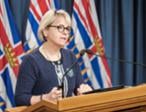[Editor's note: The Tyee received this unsolicited op-ed from Dr. Vanessa Brcic, a family practice clinician scholar at the University of British Columbia, and we publish it here for your consideration.]
Health care is the biggest, priciest, and most important thing that government does. Hospital care swallows up a large proportion of the health care budget, but primary care in the community takes care of most patient needs and keeps people out of hospital. Patients who are connected to a family physician over time are healthier and live longer. But there hasn't been much of a conversation about primary care reform in this province, and it's time to start one. (The auditor general thinks so too.)
Doctors like myself are paid well in British Columbia, but we are paid by an antiquated compensation model called fee-for-service, which basically reduces medical visits to a series of billable scenarios. In family practice this is not cost-effective, and often leads to "turnstile medicine," because we can only bill the government for one ailment at a time.
The more patient visits we see, the more money we make. With high Vancouver rents that come out of our wages, the pressure mounts. The fee-for-service model is expensive, because it incentivizes illness care rather than prevention. It is also expensive for patients, who bear the burden of having to come back again and again for various issues.
But there are better options. In a 2012 research study published in the medical journal Canadian Family Physician, we heard from 133 recently graduated family doctors in B.C. Ninety-three of them (71 per cent) preferred progressive models of payment as opposed to the one-problem-per-visit style of practice that we buy in fee-for-service.
"As it stands now in the fee-for-service climate, setting up a practice and being tied to the clock is an onerous and very unattractive option for most of us new family physicians," one doctor said. "I never wish to put up a sign on my clinic door saying 'one complaint per visit, please.' Fee-for-service must go."
The doctors issued a compelling call for choice to set up practices that would allow them to provide more complex and comprehensive care, take more time with patients in need, and minimize frustration associated with billing.
But unlike other provinces and countries moving towards "medical homes" -- a style of primary care that is collaborative, interdisciplinary, and alternately funded -- in B.C., fee-for-service remuneration encourages a walk-in style of practice.
"Right now it pays to see as many people as possible regardless of the quality of care given. It literally pays to practice poor medicine," said one doctor.
It's not just doctors shedding light on the downside of fee-for-service. In a focus group conducted by the University of British Columbia family practice residents in 2012, patients spoke up.
"Sometimes they'll just shove me in the room," said one. "If I've got an earache and want to follow up on tests, I've got to make another appointment."
Another said: "If you have a large variety of problems -- and I'm on disability, both physical and mental -- you are toast. It's almost like you're too difficult a patient, too demanding."
Over the last 10 years, Ontario gave all GPs incentives to transition from fee-for-service to alternate funding models, most of which were a blend of fee-for-service and an annual fee for looking after a patient based on the patient's demographic. It was one of the largest and most expensive transformations in how primary care is delivered and funded. Although imperfect, it had positive effects, significantly increasing medical student enrollment in family practice residencies and reducing the province's family doctor shortage.
Research has shown how this change could have been more cost-effective and equitable, which gives us a golden opportunity to learn from this example and implement more effective reforms.
However, fears of increasing costs and lazy doctors are preventing us from doing so. Instead, we are following the juggernaut of fee-for-service remuneration that incentivizes more service, not necessarily better care. We need to give doctors the space to think and deliver the right service to the right patient, including education and prevention.
In recent years, insufficient growth in the B.C. budget has been outpaced by population growth and inflation, meaning that we have less money on the table to work with towards innovation that will pay off in the longer term. This lack of forward thinking reinforces the increasingly inadequate status quo of fee-for-service, and stifles the development of innovative models that will help us better care for patients with an increasing burden of chronic disease.
In short, you don't need to pay us more, but by paying us flexibly and allowing room for innovation, you may see 93 more family doctors ready to open a practice in B.C. not too far down the road.
Dr. Vanessa Brcic is a family physician in Vancouver, clinician scholar in the Department of Family Practice at the University of British Columbia, and research associate with the Canadian Centre for Policy Alternatives in B.C.










What have we missed? What do you think? We want to know. Comment below. Keep in mind:
Do:
Do not: